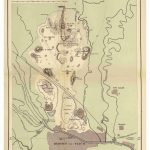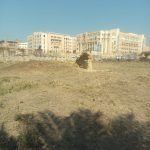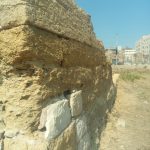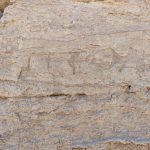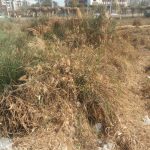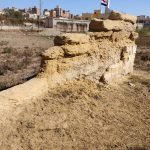MADĪNAT AL-FAYYŪM (ARSINOITŌN POLIS)
| Egyptian | Šdt | Šty | ꜣrsynꜣ |
| Greek | Κροκοδίλων πόλις | Πτολεμαὶς Εὐεργέτις | Ἀρσινοιτῶν πόλις | Ἀρσινόη |
| Latin | Arsinoe | Crialon |
| Coptic | peiom polis | peiom | piam | piwm | viom |
| Arabic | كمان فارس | مدينة الفيوم |
| English | Medinet el-Fayum | Arsinoe |
| French | Medinet el-Fayoum | Arsinoé | Crocodilopolis |
| DEChriM ID | 33 |
| Trismegistos GeoID | 327 |
| Pleiades ID | 736948 | PAThs ID | 33 |
| Ancient name | Arsinoitōn polis |
| Modern name | Madīnat al-Fayyūm |
| Latitude | 29.322498 |
| Longitude | 30.833549 |
| Date from | - |
| Date to | - |
| Typology | City |
| Dating criteria | - |
| Description | Kmān Fāris, known as Shedat and Krokodilopolis in antiquity, is situated in the area of, and is predominantly covered by, the modern-day town of Madīnat al-Fayyūm. The site is best known with regards to the large quantities of papyri which have been discovered here in the 19th and 20th centuries (Davoli 1998: 150). The Christian tradition of the site goes back as far as the middle of the second century CE, while attestations of bishops begin from the late third century CE (Timm 1984-1992: 1506). Fourth-century material remnants of Christianity are, however, extremely limited, restricted to two papyri (Michigan Ms. 136 and P.Lond.Copt. I 523). No churches are known from the site, though this is in no way surprising given the haphazard history of archaeological investigations coupled with the extensive expansion of the modern settlement (and associated agricultural development), which has resulted in the drastic reduction of the archaeological area from 2.8km2 in 1887 to a few tens of meters in the late 1990s, and even less today (Davoli 1998: 149-150). Consequently, only little is known about the urban layout of the city, which is understood to have operated as the largest and most important of the Fayyūm in antiquity. For a comprehensive summation of the known monuments, see Davoli 1998. |
| Archaeological research | The site was visited by numerous early travellers, including R. D. Vansleb, P. Lucas, E. Jomard, and G. B. Belzoni, but none of them left informative descriptions that could shed light on the now-obstructed features of the site (Vansleb 1677: 253-264; Lucas 1724: 144-146; also Davoli 1998: 149). The first known excavation work was instigated by J. J. Rifaud in 1823-4, which resulted in several plans and drawings that give an idea of the complex stratigraphy of the site (Rifaud 1829; Id. 1810; Vercoutter 1992, p. 26). Later, in 1843, the site was visited by K. R. Lepsius, though it is presumed that he did not excavate (Davoli 1998: 149). This was then followed by the excavations of L. Vassalli in 1862, but there is very limited associated published material (Vassalli 1867), followed by those of G. Schweinfurth, who published an overview of the current state of knowledge, as well as the topography of the archaeological area. This included the first plan of the site, which remains to this day the only cartographic evidence of the ruins (Schweinfurth 1886: 184; id 1887; Davoli 1998: 150, fig. 68). This was then followed by a brief mission directed by W. M. F. Petrie, who concentrated on the temple area (Petrie 1889: 3, 56-59, pl. XXIX). Several Egyptian archaeological missions were conducted in the mid- and late-20th century, including that directed by M. Mohsen el-Khashab (Leclant 1967: 191, figs. 21-23; El-Khashab 1978: 65-67, plan III, pls. 55-59), F. Yacoub (Yacoub 1968), and later in the 1980s (Leclant 1984: 369), but only limited information is known regarding these missions. In 1964-1965, the Institute of Papyrology of the University of Florence conducted a brief mission, directed by S. Bottico, of which, again, only little is known (Manfredi 1965; Leclant 1966: 139-140). Experimental geo-magnetic research was conducted in the 1980s at three sectors of the now very small site by A. G. Hussain (Hussain 1983: 42-49). And finally, the local inspectorate of the SCA conducted further archaeological as well as restoration work in February 1996 (Davoli 1998: 153, n. 238). It is very likely that additional work by the SCA has been carried out since then, though there is no associated published information as far as we are aware. In addition to these official missions, numerous other monuments came to light (particularly throughout the 20th century) as the result of local digging to obtain sebakh (Davoli 1998: 152). |
• Belzoni, G. B. 1988. Viaggi in Egitto ed in Nubia, ed. A. Siliotti. Firenze: Arte e Natura libri.
• Bingen, J. 1955. “Anses d’amphores de Crocodilopolis-Arsinoé.” Chronique d’Égypte 30: 130-133.
• Daris, S. 1981. “I quartieri di Arsinoe in età romana.” Aegyptus 61: 143-154.
• Davoli, P. 1998. L’archeologia urbana nel Fayyum di età ellenistica e romana, 149-159. Napoli: G. Procaccini.
• El-Khashab, A. E.-M. 1978. ΤΑ ΣΑΡΑΠΕΙΑ à Sakha et au Fayum ou les bains thérapeutiques. Cairo: Service des antiquités de l’Égypte.
• Empereur, J.-Y. 1977. “Timbres amphoriques de Crocodilopolis-Arsinoé.” Bulletin de l’Institut français d’archéologie orientale 77: 197-233.
• Habachi, L. 1955. “A Strange Monument of the Ptolemaic Period from Crocodilopolis.” Journal of Egyptian Archaeology 41: 106-111.
• Hussain, A. G. 1981. “Magnetic Prospecting for Archaeology in Kom Oshim and Kiman Faris, Fayoum, Egypt.” Zeitschrift für ägyptische Sprache und Altertumskunde 110: 36-51.
• Jomard, E. 1809. “Mémoire sur le lac de Moeris, comparé au lac du Fayoum.” In Déscription de l’Égypte. Antiquités, Mémoires I. Paris.
• Jomard, E. 1821. “Déscription des antiquités du nome Arsinoite, aujourd’hui le Fayoum.” In Déscription de l’Égypte. Antiquités, descriptions IV. Paris.
• Kiessling, E. 1933. “Zum Kult der Arsinoe im Fayum.” Aegyptus 13: 542-546.
• Lefebvre, G. 1908. “Égypte gréco-romaine. I. Crocodilopolis.” Annales du Service des antiquités de lʼÉgypte 9: 231-242.
• Lefebvre, G. 1910. “Égypte gréco-romaine. II. Crocodilopolis et Théadelphie.” Annales du Service des antiquités de lʼÉgypte 10: 155-172.
• Lefebvre, G. 1914. “Égypte gréco-romaine. III.” Annales du Service des antiquités de lʼÉgypte 13: 87-108.
• Lucas, P. 1724. Voyage du sieur Paul Lucas, fait en M. DCCXIV, par ordre de Louis XIV dans la Turquie, l’Asie, Sourie, Palestine, Haute et Basse Égypte, III. Paris: Nicolas Simart.
• Petrie, W. M. F. 1889. Hawara, Biahmu and Arsinoë. London: Feld & Tuer, The Leadenhall Press.
• Rifaud, J. J. 1829. “Description des fouilles et des découvertes faites par M. Rifaud dans la partie est de la Butte Koum-Medinet-el-Farès, accompagnée du dessin, des coupes et du plan des constructions inférieures, lue à la Société de Géographie le vendredi 19 juin 1829.” Bulletin de la Société de géographie 12: 73-90.
• Rifaud, J. J. 1830. Voyage en Égypte, en Nubie et lieux circonvoisins depuis 1805 jusqu’en 1827. Paris: Treuttel et Würtz.
• Schweinfurth, G. 1886. “Reise in das Depressionsgebiet im Umkreise des Fajüm im January 1886.” Zeitschrift der Gesellschaft für Erdkunde 21: 96-149.
• Schweinfurth, G. 1887. “Zur Topographie de Ruinenstäte.” Zeitschrift der Gesellschaft für Erdkunde 22: 54-79.
• Timm, S. ed. 1984-1992. Das Christliche-Koptische Ägypten in Arabischer Zeit: Eine Sammlung Christicher Stätten in Ägypten in Arabischer Zeit unter Ausschyss von Alexandria, Kairo, des Apa-Mena-Klosters (Dēr Abu Mina), der Skētis (Wādi n-Naṭrūn) und der Sinai-Region. Vol. 4: 1506-1525. Weisbaden: Dr Ludwig Reichert.
• Vansleb, R. D. 1677. Nouvelle relation en forme de journal d’un voyage fait en Égypte en 1672 et 1673. Paris: Estienne Michallet.
• Vassalli, L. 1867. I monumenti istorici egizi. Il Museo e gli scavi d’antichità eseguiti per ordine di S. A. il Vicerè Ismail Pascia. Milan: Tipografia Guglielmini.
• Vercoutter, J. 1992. L’Antico Egitto. Archeologia di una civiltà. Milan: Gallimard-Electa.
• Wessely, C. 1903. Die Stadt Arsinoë (Krokodilopolis) in griechischer Zeit. Vienna: Carl Gerold's Sohn.
• Yacoub, F. 1968. “A Private Bath Discovered at Kîmân-Fâris, Fayûm.” Annales du Service des antiquités de l’Égypte 60: 55-56.


 Json data
Json data